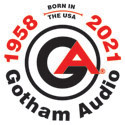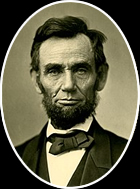An Incomplete History of Gotham Audio
The Gotham organization originated with Stephen Temmer, a true tonmeister whose forty year career was marked by a passionate dedication to music, broadcasting, recording and education. Temmer began recording for radio broadcasts in the 1940's and established Gotham Recording in 1950. He made the first recordings of the Metropolitan Opera for broadcast and produced landmark recordings with the Chicago Symphony and Edith Piaf. In the early 1950's he began importing high quality recording equipment from Europe leading to the formation of the Gotham Audio Corporation in 1958.
For the next thirty years, Gotham was best known as the exclusive American distributor for Neumann microphones and disc cutting equipment. Driven by Temmer’s quest for improved recording techniques, Gotham also undertook US distribution for many specialized European and English audio manufacturers, including EMT, the pioneering German manufacturer of plate reverberators.
For many engineers, Temmer's name is most closely associated with the magnificent Neumann tube condenser microphones of the 1950's and 1960's. But perhaps the most memorable product associated with Gotham was developed by a team of M.I.T engineers who were beginning to apply new digital technologies to audio. Temmer saw an immediate application for their digital delay line as a pre-delay for EMT echo plates and as a solution to propagation delays in live sound applications. He commissioned their company, Lexicon, to produce 50 units of the Delta T-101, which he introduced in 1971 at the first European AES convention in Cologne.
The initial units were badged with Gotham Audio on the front panel and Lexicon on the rear. The Gotham T-101 was the first commercially-available digital audio product. Its instant success ushered in a new age of digital audio and catapulted Lexicon to a position of industry leadership. Gotham continued its involvement with digital reverberation, marketing the legendary EMT 250 and 251 electronic reverberators, developed by EMT and an American team led by Barry Blesser.
Gotham also developed a thriving export business in Europe for a number of American audio manufacturers including Lexicon, UREI, Valley Audio, MRL and Switchcraft. Stephen Temmer and Franz Ammann, his export distributor, opened a Gotham office in Regensdorf, Switzerland near Studer’s facilities. A Swiss company, Gotham AG, was founded in 1983 to act as a headquarters for the export side of Gotham Audio. Gotham AG also handled worldwide distribution for the very popular Gotham Audio Cables, manufactured in Austria. These cables reflected the finest heritage of European broadcast engineering which had distinguished products from manufacturers such as EMT and Neumann.
When Temmer retired in 1985, he sold his remaining shares in the Swiss company to Franz and Manuela Ammann, who developed Gotham AG as a Swiss domestic distributor for pro audio products. The Ammanns also received the sales rights for Gotham Audio Cables, which they continued to export to Gotham Audio in New York and to other distributors worldwide. Gotham AG developed a full range of audio cables, many featuring the acclaimed “Double Reussen Shielding.” In 1990, Gotham AG marketed the first audio cable specifically designed for the new AES/EBU digital audio format.
The US company prospered under the leadership of Russ Hamm and his associates Jerry Graham, Jurgen Wahl and Joe Leung. Relationships with companies such as Harmonia Mundi Acustica and CEDAR Audio kept Gotham on the cutting edge. Gotham continued to co-develop new digital products with leading manufacturers including an early, hard disc multitrack digital recorder (1984), the ProDAT professional DAT recorder and the CDR-90 Compact Disc Reference System, which was the first practical recordable CD system (1989).
The world of professional audio was profoundly affected by the fall of the Berlin Wall and the reunification of Germany in 1989. In 1991 Sennheiser took over Neumann, ending Gotham's exclusive distribution of Neumann products in the US. The principals of Gotham Audio embarked upon new ventures, and with the untimely death of Stephen Temmer in October, 1992, the Gotham Audio (NY) name and Temmer legacy slowly faded from the North American audio scene.
Gotham AG continued to produce Gotham Audio Cables and to market them in the US and internationally, The Swiss company also felt the effects of the wave of corporate mergers and acquisitions. In 2000, Belden acquired ownership of Dorfler Kablewerk in Austria, where Gotham cables had been made for a quarter-century. Numerous problems ensued, requiring that Gotham’s owners take steps to regain full control of the manufacturing process. In 2002, Gotham established a new production facility and inventories were replenished with fresh cable that fully met traditional Gotham specifications and standards.
In 2004, Franz Ammann and Lewis Frisch launched a new company in Pennsylvania, Gotham Audio LLC, to better serve customers in the US and Canada. Since 2005, the famed Gotham Audio name and distinctive Gotham logo have regained a position of prominence in the American audio market, continuing a 50 year tradition of professionalism and excellence.




